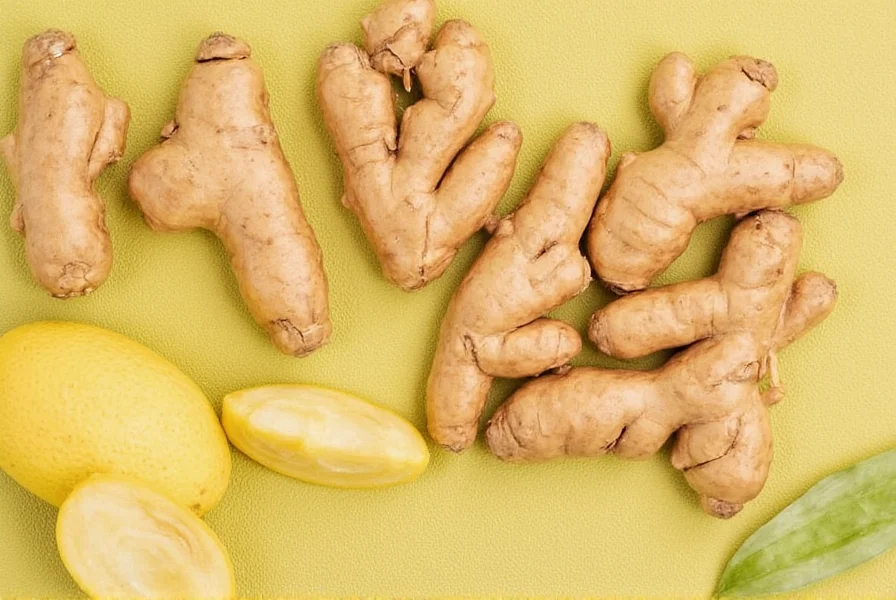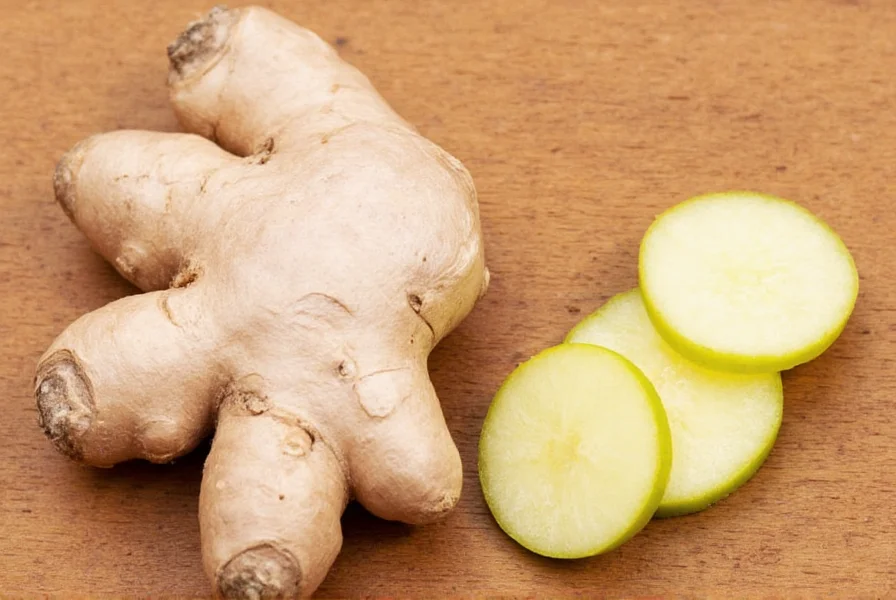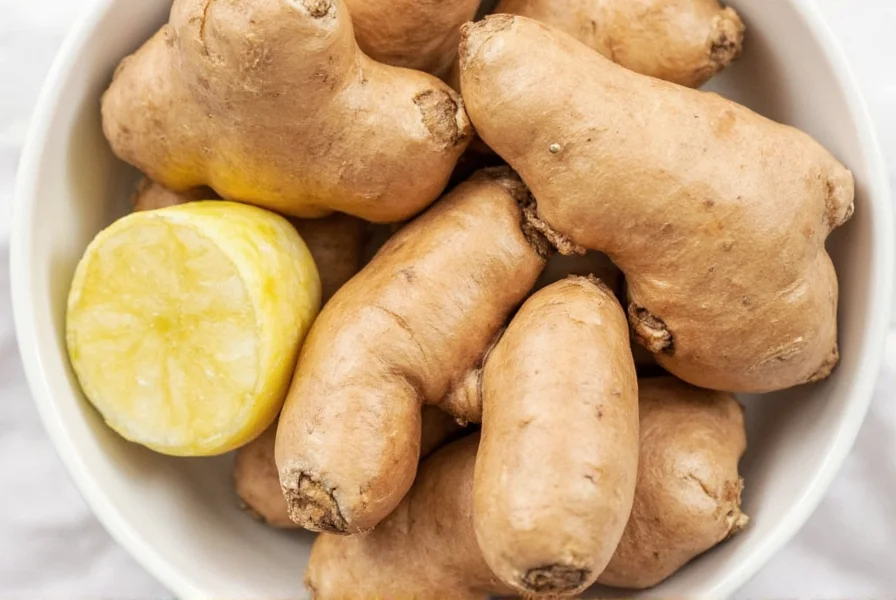Many people searching for "vegan ginger root" may wonder if there's a special variety designated for plant-based diets. The truth is simple: all ginger root (Zingiber officinale) is naturally vegan. This rhizome grows underground as part of a flowering plant native to Southeast Asia and requires no animal involvement in its growth cycle. The confusion sometimes arises because certain processed ginger products—like candied ginger, ginger beer, or prepared ginger sauces—may contain non-vegan ingredients such as honey, dairy, or gelatin.
Why Ginger Root Is Inherently Vegan
As a root vegetable, ginger contains no animal products by its very nature. Unlike some foods that might require processing with non-vegan elements, fresh ginger root comes directly from the ground in its vegan form. When you purchase raw ginger at a grocery store or farmers market, you're getting a 100% plant-based product that aligns perfectly with vegan dietary principles.
The misconception about "vegan ginger" likely stems from encountering processed ginger products that aren't vegan-friendly. For example, some ginger candies use honey as a sweetener, while certain ginger dressings might contain honey or dairy derivatives. However, the root itself remains unquestionably vegan.
Nutritional Benefits for Plant-Based Diets
Ginger root offers several nutritional advantages that complement vegan lifestyles. This versatile root contains bioactive compounds like gingerol that provide anti-inflammatory and antioxidant properties. For those following plant-based diets, ginger can help address common nutritional concerns while enhancing meal flavors without animal products.
| Nutrient | Per 10g Serving | Vegan Diet Relevance |
|---|---|---|
| Gingerol | 25-30mg | Natural anti-inflammatory compound |
| Vitamin B6 | 0.01mg (1% DV) | Supports metabolism and nervous system |
| Magnesium | 3mg (1% DV) | Important for bone health and energy production |
| Dietary Fiber | 0.2g | Aids digestion and gut health |
These nutritional properties make ginger particularly valuable for vegan diets, where natural anti-inflammatory compounds can help counter potential inflammation from other dietary sources. The digestive benefits of ginger also support better absorption of plant-based nutrients, which sometimes have lower bioavailability than animal-derived counterparts.
Using Ginger Root in Vegan Cooking
Fresh ginger root enhances vegan dishes with its distinctive flavor profile—spicy, warm, and slightly sweet. Unlike dried ginger powder, fresh ginger provides a brighter, more complex taste that works well in both savory and sweet plant-based recipes. When selecting ginger for vegan cooking, look for firm roots with smooth skin and minimal wrinkles.
Vegans can incorporate ginger into their diets through various preparation methods:
- Grated: Adds zesty flavor to dressings, marinades, and sauces
- Sliced: Perfect for infusing soups, broths, and teas
- Pureed: Blends well into smoothies and vegan curry pastes
- Pickled: Creates a tangy condiment for grain bowls and sandwiches
For optimal flavor extraction in vegan cooking, crush ginger before slicing or grating. This technique releases more of the essential oils and gingerol compounds that give ginger its characteristic heat and health benefits.

Watch Out for Non-Vegan Ginger Products
While fresh ginger root is always vegan, processed ginger products require careful label reading. Common non-vegan ingredients to watch for include:
- Honey in candied ginger or ginger chews
- Dairy derivatives in ginger ice creams or lattes
- Gelatin in some ginger-flavored gummies
- Shellac coating on crystallized ginger
- Non-vegan sugars processed with bone char
When purchasing prepared ginger products, look for certifications like the Vegan Society logo or check ingredient lists for plant-based sweeteners like maple syrup, agave nectar, or coconut sugar instead of honey.
Simple Vegan Ginger Recipes to Try
Here are two straightforward recipes showcasing ginger's versatility in plant-based cooking:
Vegan Ginger-Turmeric Immunity Shot
Combine 2 inches fresh ginger, 1 inch turmeric root, juice of half a lemon, and 1 cup filtered water in a blender. Strain through cheesecloth and store in a glass bottle for up to 3 days. This vegan immunity booster provides natural anti-inflammatory benefits without any animal products.
Stir-Fried Tofu with Fresh Ginger
Marinate cubed firm tofu in tamari and rice vinegar. Sauté sliced ginger in sesame oil until fragrant, then add tofu and vegetables like broccoli and bell peppers. Finish with a sauce of tamari, maple syrup, and cornstarch. This vegan ginger stir-fry demonstrates how fresh ginger enhances plant-based proteins.

Proper Storage for Maximum Freshness
To extend the shelf life of your vegan-friendly ginger root, store unpeeled pieces in the refrigerator's crisper drawer for 2-3 weeks. For longer storage, freeze whole or sliced ginger in an airtight container for up to 6 months. Frozen ginger can be grated directly without thawing, making it convenient for spontaneous vegan cooking.
When selecting ginger for your plant-based kitchen, choose firm roots with smooth skin and minimal wrinkles. Avoid pieces with soft spots or mold, which indicate spoilage. The heavier the ginger feels for its size, the juicier and fresher it will be—perfect for maximizing flavor in vegan recipes.











 浙公网安备
33010002000092号
浙公网安备
33010002000092号 浙B2-20120091-4
浙B2-20120091-4